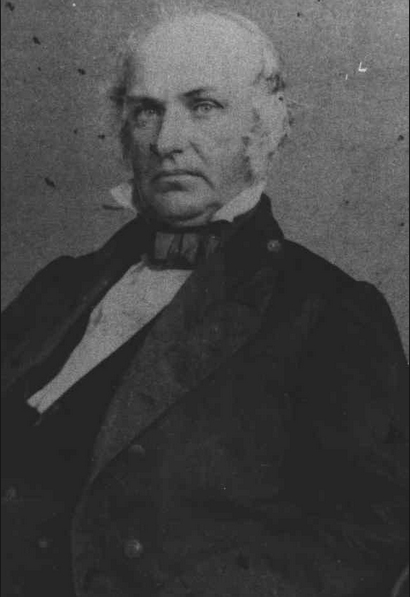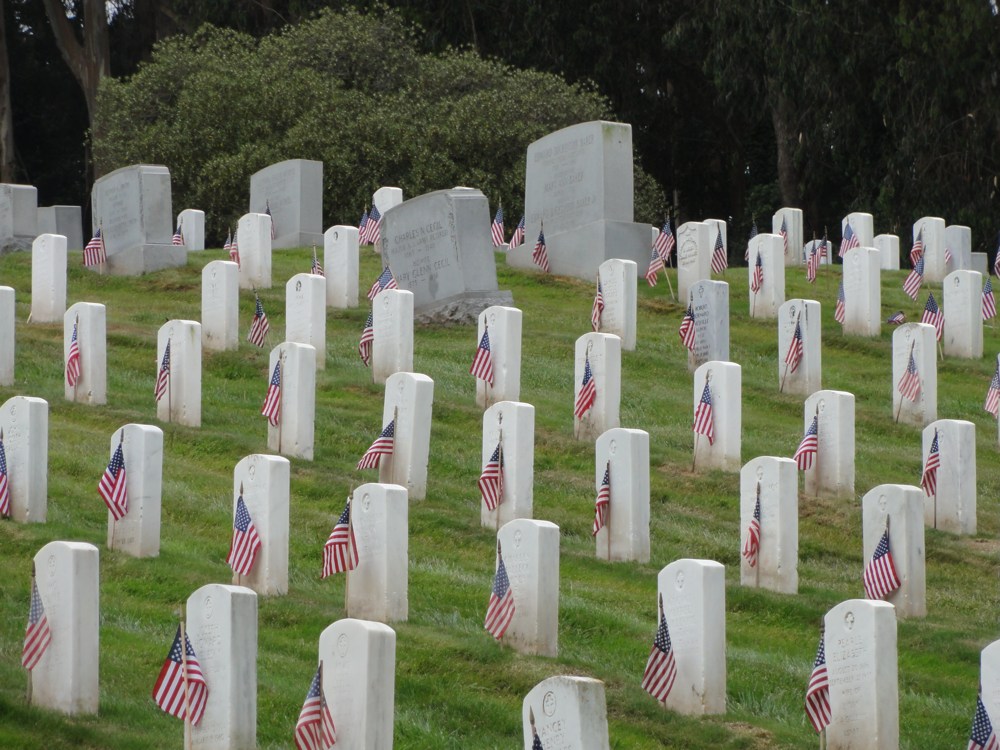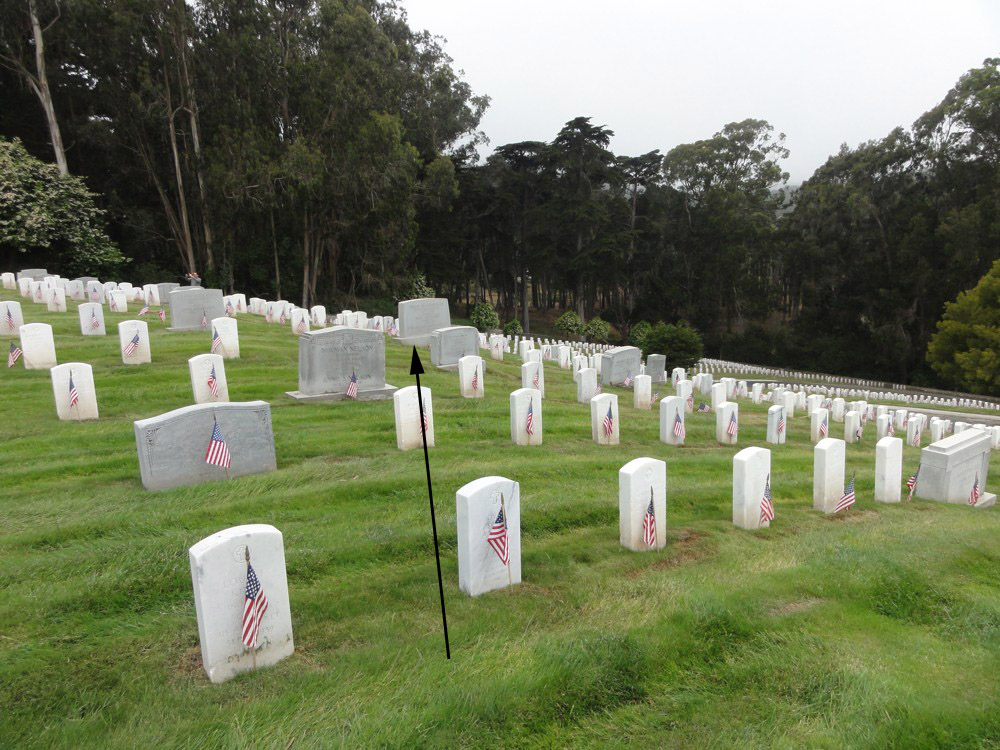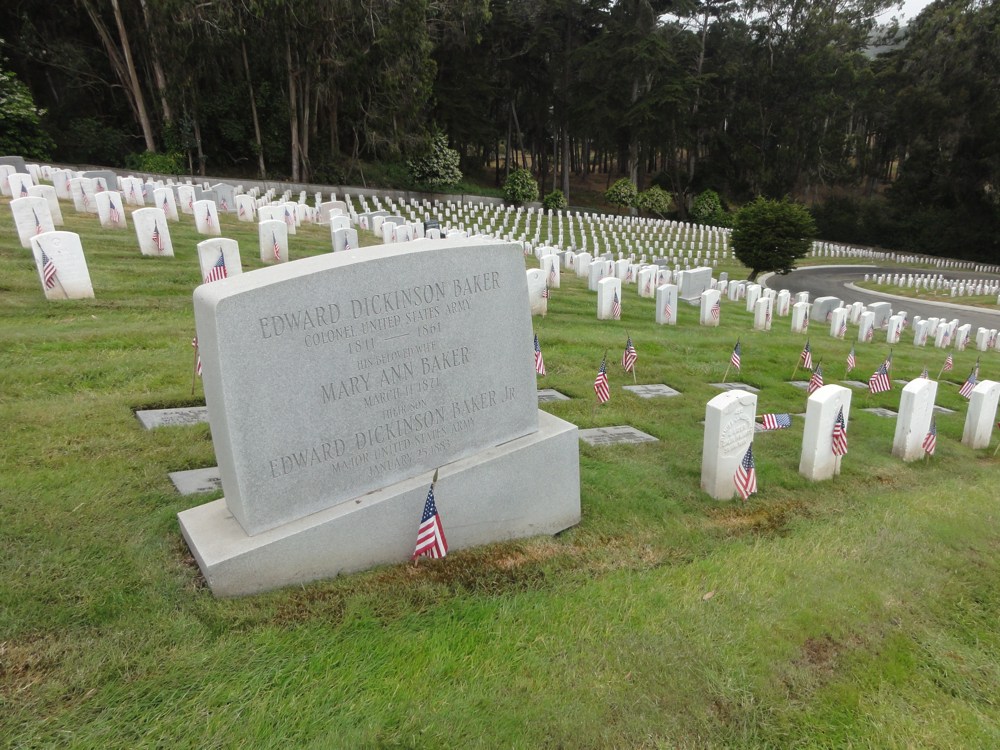Edward Dickinson Baker
1811-1861
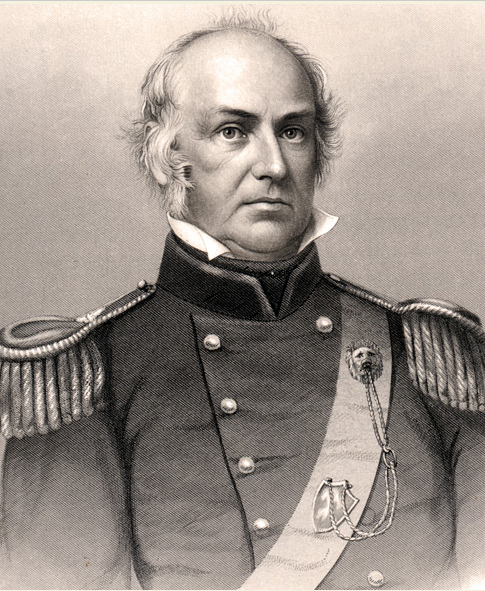
Subject to Copyright
Samuel P. Bates, Martial Deeds of Pennsylvania
(Philadelphia: T.H. Davis and Co., 1876), 388.
From http://hd.housedivided.dickinson.edu/node/22063
![]()
Col. Edward D. Baker
London, England, 1811-1861, Ball's Bluff (Va.) Battlefield.
At the age of four years this boy was brought to Philadelphia, and at the age of fifteen he was teaching school. He was admitted to the bar in Carrollton, Ill., in 1830; the next year married Mrs. Mary Ann Lee, and in 1832 participated actively in the Black Hawk War.
It was shortly after his marriage that he was immersed and became a member of the church in Carrollton. It is not probable that he was formally set apart to the Christian ministry, but his ardent disposition, superior ability as a public speaker and his sincere devotion to the pure gospel led him to its public proclamation for near a decade. He also baptized some converts. Alin. W. H. Cannon, pastor
of the Central Church, Decatur, says that his own grandfather, Hardin Goodin, wdiom he knew well, was immersed by Mr. Baker in Honey Creek, Pike County. Nor was this an exceptional instance. He was also associated with those Disciples in the early thirties at Jacksonville in their first efforts looking toward co-operative missionary work.
In 1835 he moved to Springfield. There he met and became the sincere and lifelong friend of Abraham Lincoln. Two such magnificent and magnanimous souls could easily understand and love each other. This friendship proved of incalculable value to the Federal Union in the black night of bloody horrors in which both suns went down.
In 1837, Mr. Baker was elected to the House in the Legislature and in 1840 to the Senate. In 1844 he beat Mr. Lincoln for the nomination for Congress on the Whig ticket, and was elected. But Mr. Lincoln's feelings were reflected in the fact that a baby boy who came into his home in 1846 was named Edward Baker Lincoln. While representing the Springfield district in Congress, Mr. Baker raised a regiment of infantry and saw active service as its colonel in the Mexican War. Meanwhile, his official duties calling him to Washington, he addressed the House of Representatives wearing his military uniform. In 1848, Colonel Baker, rather than contest a second time with Mr. Lincoln the nomination for Congress, moved to Galena. There he was nominated on the Whig ticket, and elected. Mr. Lincoln was returned from the Springfield district. In 1851, Colonel Baker was engaged in superintending the construction of the Panama Railroad. In 1852 he moved to California. In San Francisco he quickly took a leading place at the bar, and for eight years was one of the representative and most influential citizens of the State.
Upon the urgent invitation of friends he was induced to move to Salem, Ore., in February, 1860. Such was his fidelity to principle, his commanding ability, his matchless eloquence and urbanity, that he was elected to the United States Senate at the next meeting of the Oregon Legislature.
In 1912, Mr. E. R. Kennedy published a volume entitled "The Contest for California in 1861," in which he clearly shows that it was chiefly through the statesmanship of Colonel Baker that the Pacific Coast was then saved to the Union. The book is charmingly written and is a distinct contribution to American history.
With the coming of the Civil War, Mr. Baker was busy in the United States Senate. However, he raised a regiment in New York and Philadelphia of sixteen hundred men and was commissioned to command the brigade to which it belonged. It was encamped near the Capital. On August 1, 1861, members of the Senate hastily summoned Colonel and Senator Baker to the chamber to reply to a speech, to be delivered there that day by Senator Breckenridge, of Kentucky. He came in, laid his sword upon his desk, and sat down to listen. His reply is classed among the great orations of the world. James G. Blaine says that its delivery was the most extraordinary of any occurrence that ever transpired in the Senate chamber.
October 21, having stood at the head of his brigade for hours against great odds, he was struck by four or five rifleballs almost simultaneously and fell in death—*'as gentle and pure and unselfish and generous and eloquent and valiant a man as ever cheerfully gave his life for a noble cause." Mrs. Judith Bradner, a charter member of the First Church in Bloomington, passed on in 1912 at the age of ninety-eight years. She at one time entertained at dinner in her home Stephen A. Douglas, Abraham Lincoln and Edward D. Baker. She described Mr. Baker as a most attractive personality, a fine conversationalist and an engaging presence, at once commanding and kindly. A marble statue inscribed "Baker" stands in one of the rooms of the nation's Capitol.
Source: Haynes, N.S., History of the Disciples of Christ In Illinois, pages 466-469.
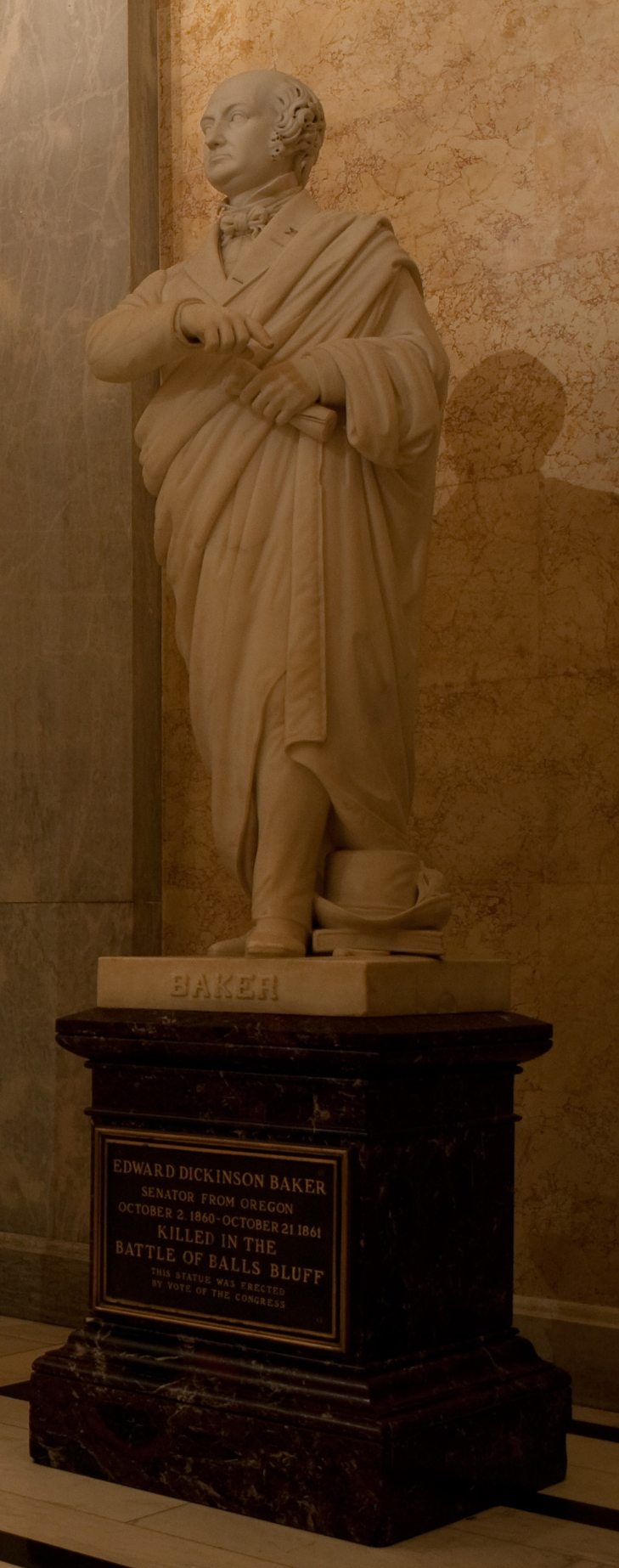
The First War Related Statue Placed In The Rotunda
Of The National Capitol Building, Washington D.C.
Subject To Copyright
Link Here
![]()
Col. Edward D. Baker - Friend of Lincoln
When I was preaching for the Druid Hills Church in Atlanta, there appeared a news item that President Harry Truman had located a marker on the Ball Bluff (Virginia) battlefield where Col. Edward Dickinson Baker had been killed in battle.
In order to get more information on the subject I recently wrote a letter to Mr. Truman in Independence, Mo., to which came the following interesting reply:
"Dear Mr. Powell:
"In reply to your letter of the 5th, Colonel Edward Dickinson Baker was killed in the assault column going over Ball's Bluff during the war between the States. There is a little marker at the top of the Bluff where he was killed, not far from the cemetery where other casualties were buried.
"Colonel Baker is buried in San Francisco in an elaborately marked grave in a cemetery which he promoted as a resident of California.
"He was a congressman from Illinois and from California, and finally, the first senator from Oregon. Those were the days when people were trying to make as many votes in the Senate as possible to keep the South from having a balance of power.
"He raised a regiment in Pennsylvania and called it the First California Regiment, and the reason he that he wanted to wear his uniform in the Senate, did not accept a promotion to Brigadier General was which he did.
"He was a most remarkable man, and I have made some study of his life and accomplishments. 1 think it would be well worth your while to look into his background and study what he tried to do.
"Sincerely yours,
"Harry Truman''
My point of interest in Edward Baker is that he was a member of the church and often preached. He was born in London, England, in 1811. At the age of four he was brought to Philadelphia, and at the age of fifteen he was teaching school. He was admitted to the bar in Carrolton, Ill., in 1830; the next year he was married to Mrs. Mary Ann Lee, and in 1832 participated actively in the Black Hawk war.
It was shortly after he married that he became a member of the church in Carrolton, Ill. Though he did not consider himself a preacher of the gospel, he nevertheless preached regularly for some ten years. He baptized a number of people. In 1835 Baker moved to Springfield. There he met and became the sincere and lifelong friend of Abraham Lincoln.
In 1837, be was elected to the House in the Legislature and in 1840 to the state Senate.
In 1842 Lincoln, as a candidate for Congress, sought the support of the Whigs of Sangamon County in a primary election, but was defeated by Edward Baker, "a Disciple preacher." Baker's success was largely due to the backing he received from the "Disciples." "Baker had all the 'Campbellites,' to whose church he belonged.'" Lincoln is quoted as saying: "Baker is a Campbellite; and therefore, as I suppose, with few exceptions, got that church." In another account, is this quotation: "Baker and his wife belonged to that numerous and powerful sect which has several times played so important a part in western politics—The Disciples. They all supported him energetically, and used as arguments against Lincoln that his wife was a Presbyterian, that most of her family were Episcopalians, that Lincoln himself belonged to no church and that he was suspected of deism, and, finally, that he was a candidate of the aristocracy."
Lincoln's feelings for Baker were reflected in the fact that a baby boy who came into his home in 1846 was named Edward Baker Lincoln.
While representing the Springfield district in Congress, Baker raised a regiment of infantry and saw active service as its colonel in the Mexican war. Meanwhile, his official duties calling him to Washington, he addressed the House of Representatives wearing his military uniform.
In 1848, Colonel Baker, rather than contest again with Mr. Lincoln in the nomination for Congress, moved to Galena. There he was nominated on the Whig ticket, and elected. Mr. Lincoln was returned from the Springfield district.
1n 1851, Colonel Baker was engaged in superintending the construction of the Panama Railroad. In 1852, he moved to California. In San Francisco he quickly took a leading place at the bar, and for eight years was one of the representative and most influential citizens of the state.
In February of 1860, he moved to Salem, Oregon. He was elected to the United States Senate at the next meeting of the Oregon Legislature.
Col. Baker had a prominent part in the first inauguration of Lincoln, which is detailed by Carl Sandburg.
"On the day of Lincoln's inauguration, President Buchanan in a room at the Capitol that morning signed bills and disposed of matters that had kept the Senate in session till six o'clock that morning. He bad just managed to close up his affairs when noon came, and he drove with Senator Baker of Oregon and Senator Pearce of Maryland from the White House to Williard's in an open carriage. Buchanan stepped out of the barouche, disappeared into the doorway of Williard's and soon returned arm in arm with Lincoln as police kept a path for them. Then the procession, headed by Marshall in Chief Major French, with aides in blue scarfs and white rosettes, carrying blue batons with gilt ends, their saddlecloths blue and white, moved down Pennsylvania Avenue with representations from the judiciary; the clergy; foreign ministers, the diplomatic corps; members of Congress. the Peace Convention delegates; heads of bureaus; governors of states; the army navy, marine corps, militia; veterans of the Revolutionary war and the war of 1812 in carriages, followed by a variety of organizations and citizens afoot.
"In the presidential carriage the crowds saw Buchanan and Lincoln side by side facing frontward and Senators Baker and Pearce seated opposite. As the men rode toward the Capitol there were cheers and there were silences along the sidewalks.
"Four milk-white horses drew the float of the Republican Association
"In the Senate chamber, packed with officials and civilians, Buchanan and Lincoln witnessed the swearing-in of Hannibal Hamlin of Maine as Vice-President. A new procession was formed to escort the President elect through a corridor to the east portico and the platform outdoors, where a crowd of at least 10,000 had waited long and finally gave its applause and scattering cheers as the actors in the solemn ceremony took places on the platform. . . . Senator Douglas took a seat, and as he looked over the crowd could have said that he and Lincoln had spoken to larger audiences on the prairies of Illinois.
"Lincoln in a new tall hat, new black suit of clothes and black boots, expensive white shirt bosom, carried an ebony cane with a gold head. Before taking a seat he looked around, hesitated, peered, then pushed the cane into a corner of the platform railing. His hat, too, needed a place. Young Henry Watterson, a press writer from Louisville, put out his hand for the hat, but Senator Douglas, just behind, outreached Watterson, receiving the hat from Lincoln's hand, and held it for half an hour.
"At the proper moment, Senator Edward Baker from Oregon stepped forward and said: 'Fellow citizens, I introduce to you Abraham Lincoln, the President-elect of the United States.'"
With the coming of the war between the states, Baker was busy in the United States Senate. However, he raised a regiment in New York and Philadelphia of sixteen hundred men and was commissioned to command the brigade to which it belonged. It was encamped near the Capitol. On August 1, 1861, members of the Senate hastily summoned Colonel Baker to the chamber to reply to a speech which was to be made that day by Senator Breckenridge of Kentucky.
On October 21, having stood at the head of his brigade for hours against great odds, he was struck by four or five rifle balls almost simultaneously and fell in death, "as gentle and pure and unselfish and generous and eloquent and valiant a man as ever cheerfully gave his life for a noble cause."
-J.M. Powell, Gospel Advocate, August, 27, 1959, pages 551-553
![]()
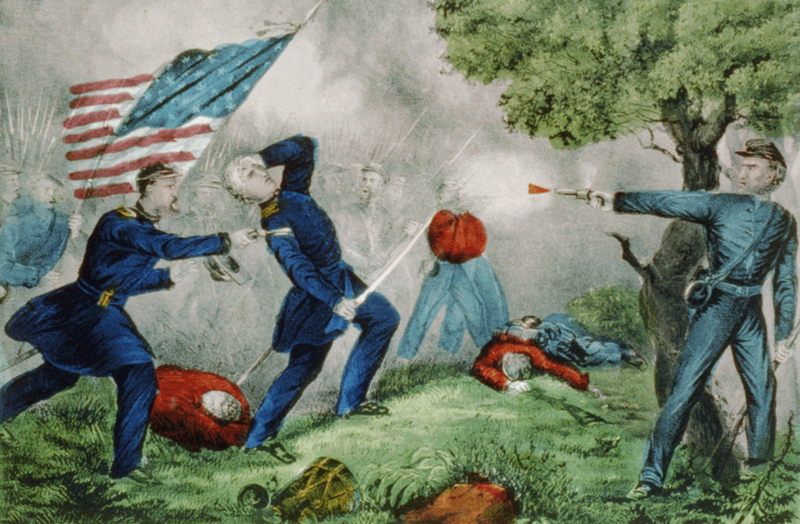
Painting Depicting The Killing Of Col. Edward D. Baker At The Battle Of Ball's Bluff
Battle At Ball's Bluff
![]()
Directions To The Grave of Edward D. Baker
Edward D. Baker is buried in the National Cemetery in San Francisco, California. The beautiful Presidio near the Golden Gate bridge is steeped in American History for its military history. Now a historical park, it is host to the beautiful National Cemetery. Buried in this cemetery are great military heroes as far back as the Civil War. Among the dead in the cemetery is the grave of Edward D. Baker. Though killed in the Battle Of Ball's Bluff, his body was laid to rest in San Francisco. Enter the cemetery and take your first right that takes you along the front of the cemetery. Just past the offices of the cemetery, take your first left, and go toward the rear of the cemetery. Take your first left, and head around up the hill toward the monuments that are larger than the standard grave marker at the top of the hill. One of the larger monuments in the section of larger monuments is that of Col. E.D. Baker.
Grave Location - OSD Section, Plot 488.
GPS Location
37.798548, -122.465901
![]()
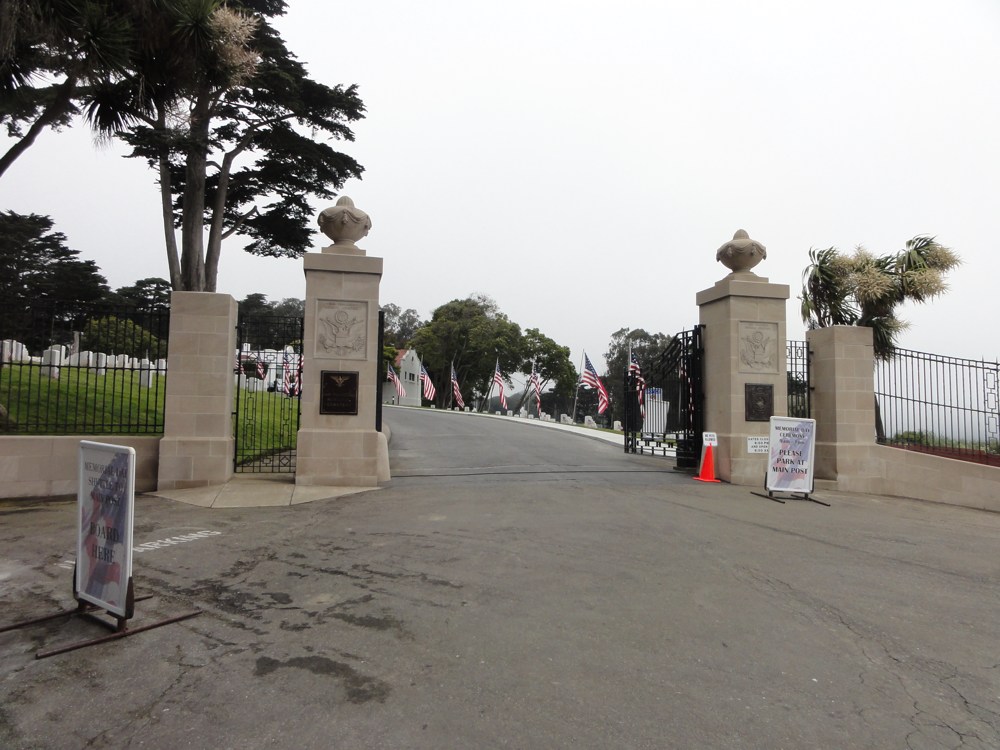
Entrance - San Francisco National Cemetery
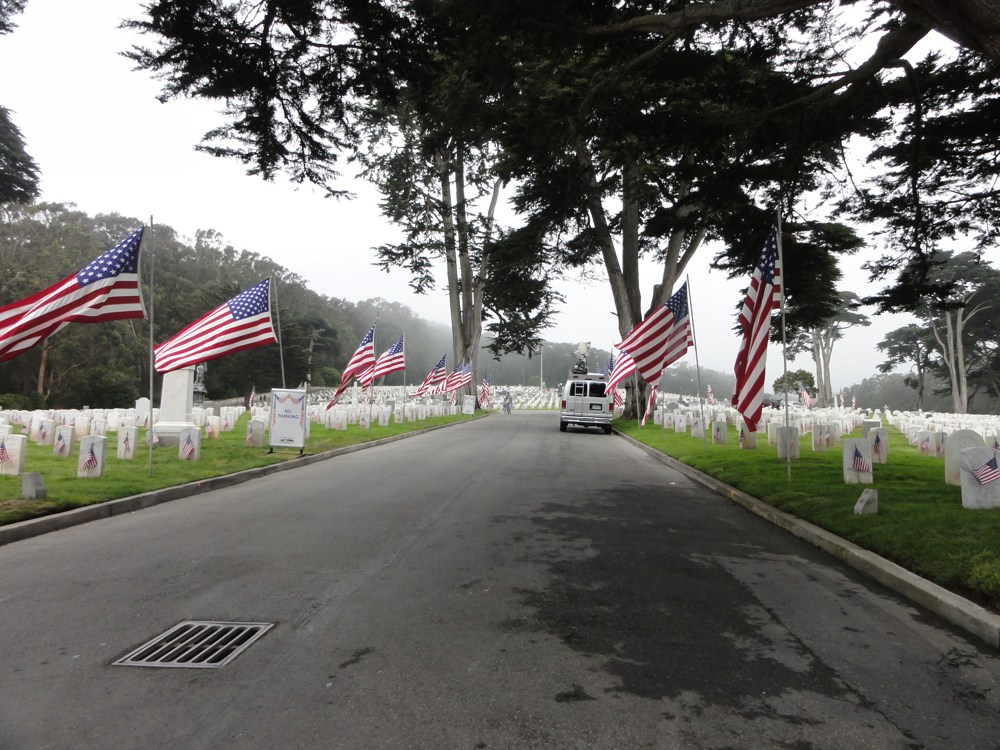
From Entrance Of Cemetery - Look Up Toward The Rear On Memorial Day, May 27, 2013
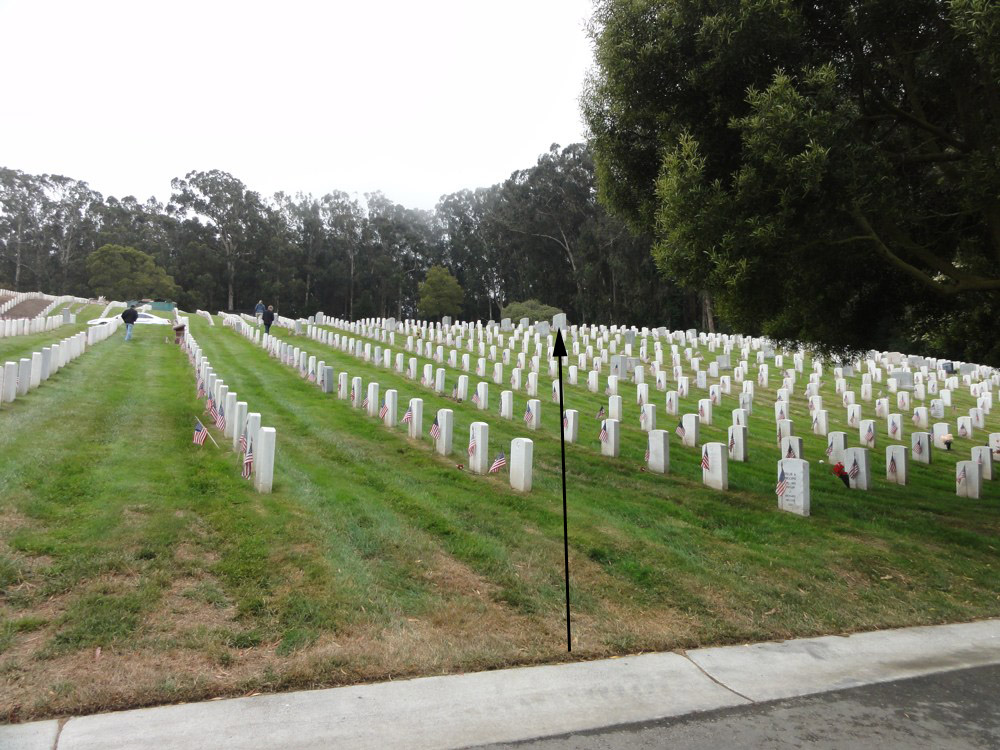
Looking Up Toward Grave From Lower Drive
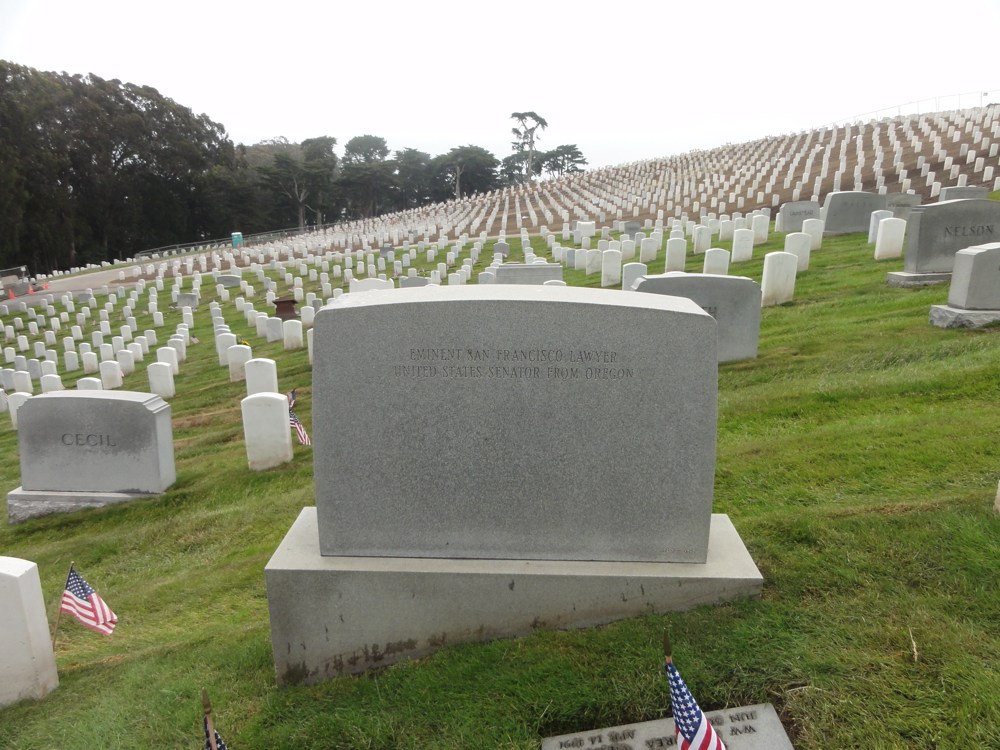
Eminent San Francisco Lawyer
United States Senator From Oregon
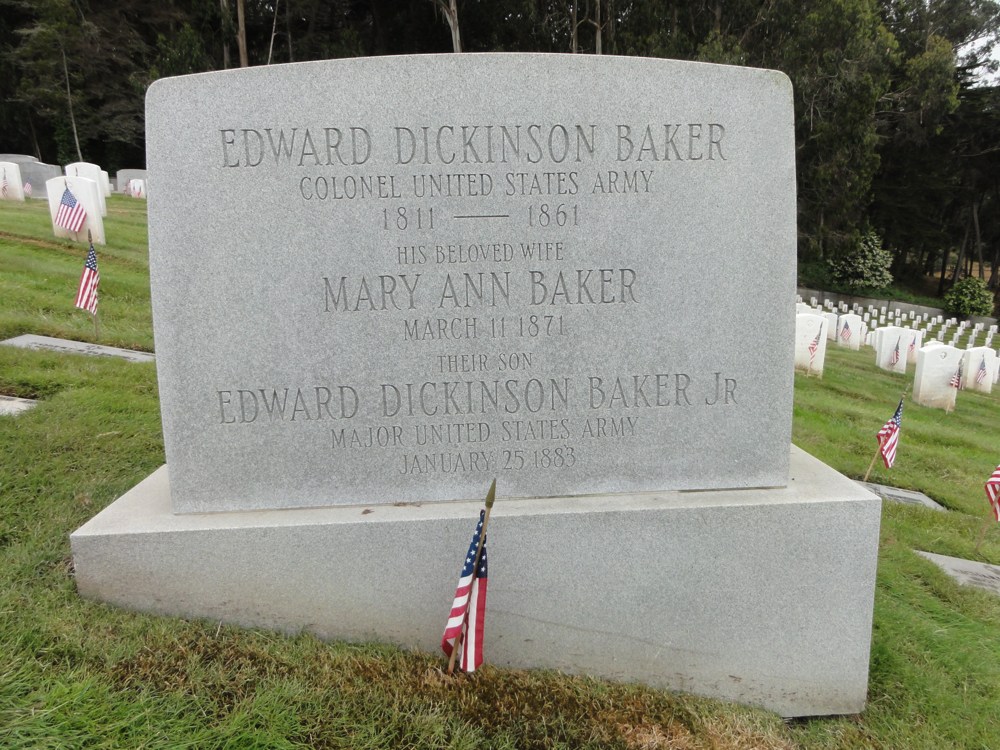
Edward Dickinson Baker
Colonel United States Army
1811-1861
His Beloved Wife
Mary Ann Baker
March 11, 1871
Their Son
Edward Dickinson Baker, Jr.
Major United States Army
January 25, 1883
![]()
Photos Taken 05.27.2013
Courtesy of Scott Harp
www.TheRestorationMovement.com
*Memorial Day in the year 2013 fell on May 27th. It was a humbling pleasure on behalf of your web editor to visit San Francisco for a few hours while waiting to catch a plane to New Zealand. My wife Jenny and I had the joy of driving to the Presidio and seeing the National Cemetery beautifully clothed in American Flags that flew at every grave in the cemetery. The day will long live in our minds as we recall the visit to the grave of Edward D. Baker. Other noted accolades of E.D. Baker include the city of Baker City, Oregon being named in honor of this man.
![]()
